Here is a collection of some of the oldest buildings in the United States. It is interesting to notice that virtually all of them could be considered “natural buildings” made from local natural materials. This speaks to the longevity of natural building techniques!
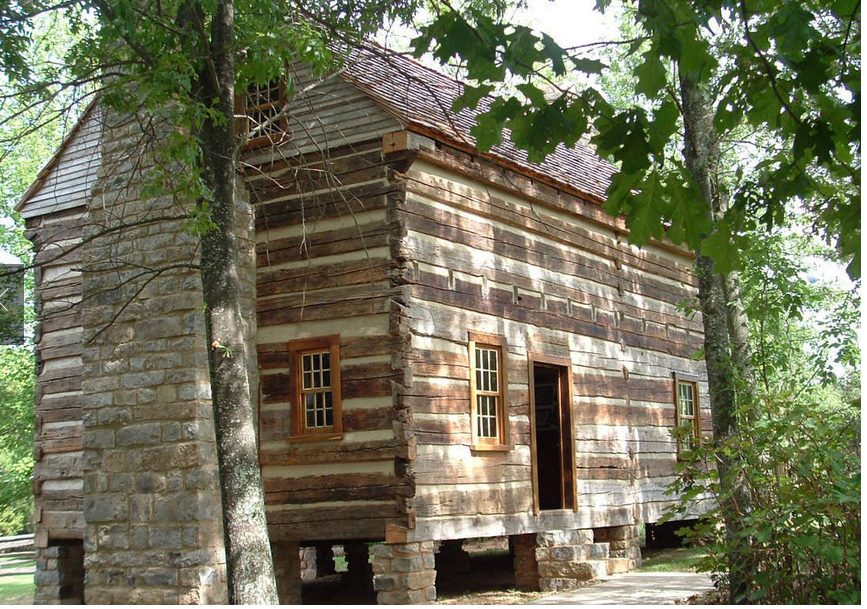 Originally constructed in Ardmore, Alabama in 1808 before being restored at to the Burritt on the Mountain museum in 2007, the Joel Eddins House is listed on the National Register of Historic Places. The 1½-story home is a unique hall-and-parlor style structure that’s not typically found in Alabama.
Originally constructed in Ardmore, Alabama in 1808 before being restored at to the Burritt on the Mountain museum in 2007, the Joel Eddins House is listed on the National Register of Historic Places. The 1½-story home is a unique hall-and-parlor style structure that’s not typically found in Alabama.
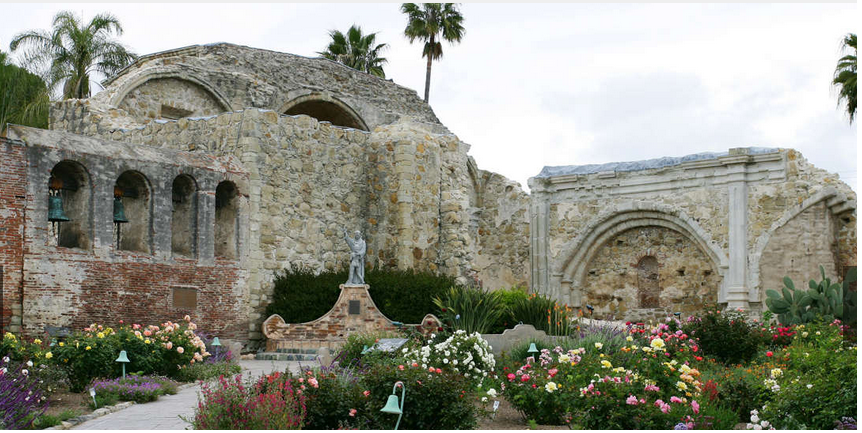 Founded in 1776 by Spanish Franciscans, the San Juan Capistrano mission is one of 21 in California. The purpose of the missions were to expand the Spain’s territory and spread Christianity, though their history is somewhat controversial and tied to brutal treatment of native people.
Founded in 1776 by Spanish Franciscans, the San Juan Capistrano mission is one of 21 in California. The purpose of the missions were to expand the Spain’s territory and spread Christianity, though their history is somewhat controversial and tied to brutal treatment of native people.
 The largest cliff dwelling in North America, Cliff Palace is part of Mesa Verde National Park in Colorado. The structure is believed to have been built in about 1190 by the Ancestral Puebloans and once included some 150 rooms. As many as 100 people lived in Cliff Palace, which may have also been a social and administrative site with significant ceremonial importance.
The largest cliff dwelling in North America, Cliff Palace is part of Mesa Verde National Park in Colorado. The structure is believed to have been built in about 1190 by the Ancestral Puebloans and once included some 150 rooms. As many as 100 people lived in Cliff Palace, which may have also been a social and administrative site with significant ceremonial importance.
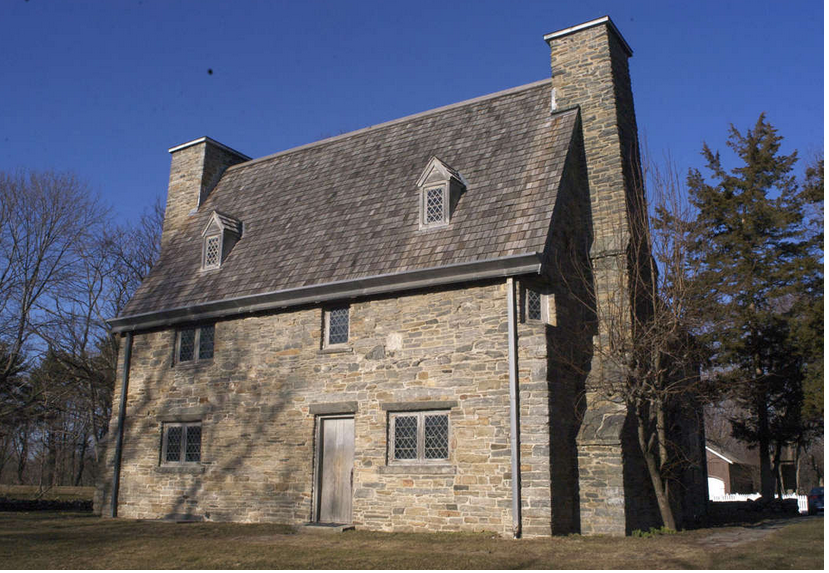 New England’s oldest stone house, the Henry Whitfield property in Connecticut, was constructed in 1639. It was built for the Rev. Whitfield, who was the leader of an English Puritan community and the founder of the town of Guilford. The property, with massive stone walls, a steeply pitched roof and casement windows, reflects a style of post-medieval architecture found in England, but which was rare in 17th century America.
New England’s oldest stone house, the Henry Whitfield property in Connecticut, was constructed in 1639. It was built for the Rev. Whitfield, who was the leader of an English Puritan community and the founder of the town of Guilford. The property, with massive stone walls, a steeply pitched roof and casement windows, reflects a style of post-medieval architecture found in England, but which was rare in 17th century America.
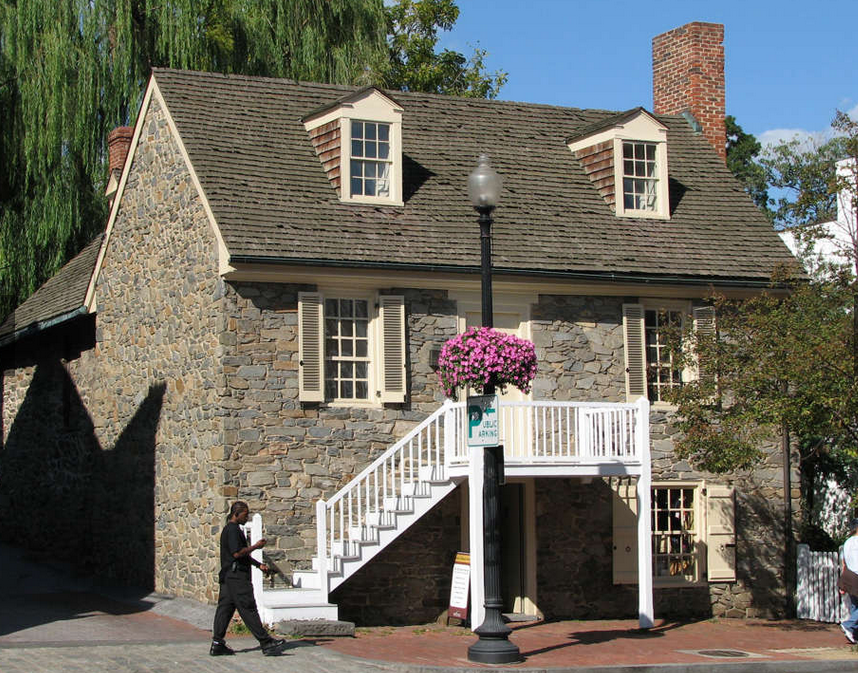 While Washington, D.C., is filled with many historic buildings, the Old Stone House is in a category of its own. It is the oldest unchanged building in America’s capital, constructed in 1765. It is Washington’s last Pre-Revolutionary colonial building on its original foundation. The house was already 59 years old when the British invaded Washington in 1814. The National Park Service opened the house to the public in 1960.
While Washington, D.C., is filled with many historic buildings, the Old Stone House is in a category of its own. It is the oldest unchanged building in America’s capital, constructed in 1765. It is Washington’s last Pre-Revolutionary colonial building on its original foundation. The house was already 59 years old when the British invaded Washington in 1814. The National Park Service opened the house to the public in 1960.
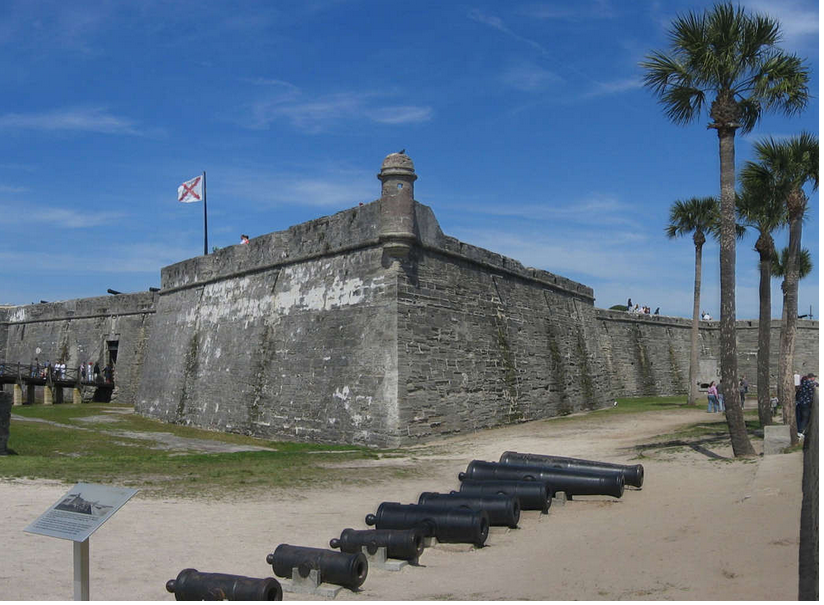 A defensive fort that can be traced to 1672, Castillo De San Marcos was built under the direction of Florida’s Spanish governor to protect the city of St. Augustine at a time when it was still part of the Spanish empire. It is the oldest masonry fort in the continental United States. Today the structure is a national monument that’s open to the public and managed by the National Park Service.
A defensive fort that can be traced to 1672, Castillo De San Marcos was built under the direction of Florida’s Spanish governor to protect the city of St. Augustine at a time when it was still part of the Spanish empire. It is the oldest masonry fort in the continental United States. Today the structure is a national monument that’s open to the public and managed by the National Park Service.
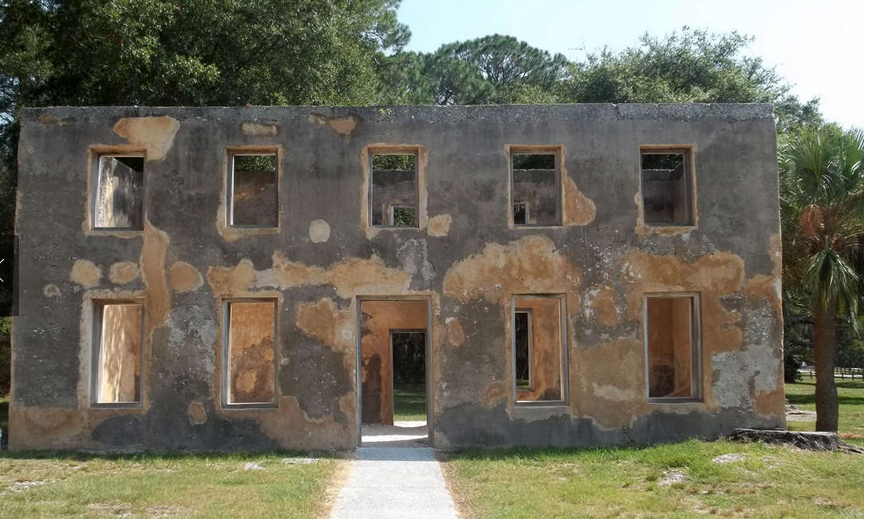 A reminder of Georgia’s colonial history, the Horton House was constructed in 1743 by British military aide Major William Horton. The structure is made of tabby, a unique concrete that was common in Georgia at the time. Horton built the home with the help of indentured servants after his first house on the island was destroyed during a Spanish attack.
A reminder of Georgia’s colonial history, the Horton House was constructed in 1743 by British military aide Major William Horton. The structure is made of tabby, a unique concrete that was common in Georgia at the time. Horton built the home with the help of indentured servants after his first house on the island was destroyed during a Spanish attack.
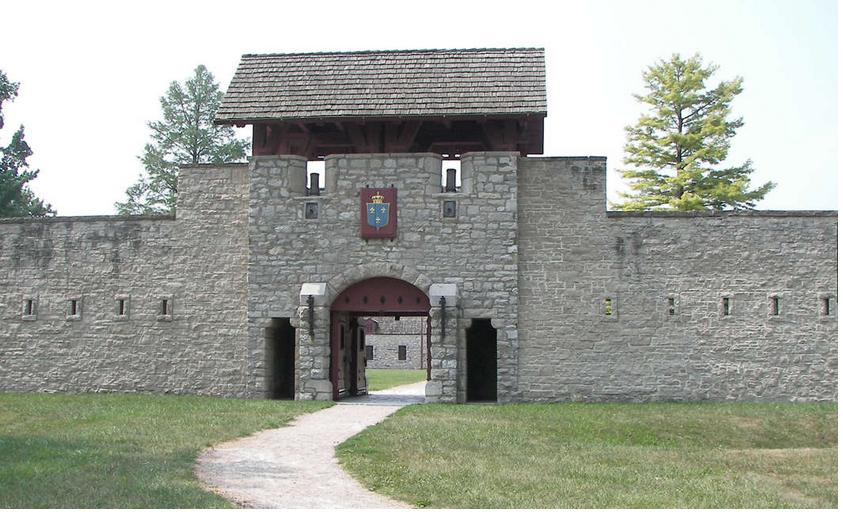 Fort de Chartres, a French fortification on the east bank of the Mississippi River, was originally built in 1720 during the colonization of Illinois to defend against the local Meskwaki people. While largely reconstructed (most of the current structure was built in 1753), its original powder magazine buildings still stand. The fort served as the French seat of government and its chief military installation in Upper Louisiana.
Fort de Chartres, a French fortification on the east bank of the Mississippi River, was originally built in 1720 during the colonization of Illinois to defend against the local Meskwaki people. While largely reconstructed (most of the current structure was built in 1753), its original powder magazine buildings still stand. The fort served as the French seat of government and its chief military installation in Upper Louisiana.
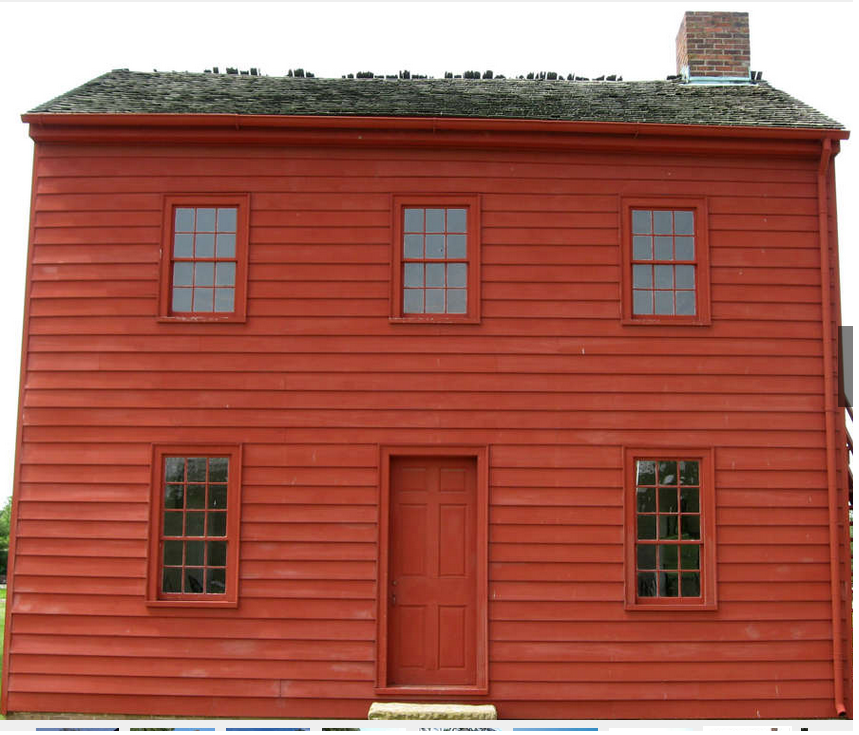 One of Indiana’s four original legislative centers, the Indiana Territorial Capital, is part of a state historical site in Vincennes. Built between 1800 and 1805, it served as the center of government for the Indiana Territory until 1813.
One of Indiana’s four original legislative centers, the Indiana Territorial Capital, is part of a state historical site in Vincennes. Built between 1800 and 1805, it served as the center of government for the Indiana Territory until 1813.
 Built in1827, the Louis Arriandeaux Log House originally housed pioneer settlers in Dubuque, Iowa, and has since been moved twice. It is now located on the Mathias Ham House estate. The double log cabin was constructed in what’s known as the dogtrot style, which was common in the United States during the 19th and early 20th centuries. Such homes feature a large breezeway through the center to cool the occupants in hot weather.
Built in1827, the Louis Arriandeaux Log House originally housed pioneer settlers in Dubuque, Iowa, and has since been moved twice. It is now located on the Mathias Ham House estate. The double log cabin was constructed in what’s known as the dogtrot style, which was common in the United States during the 19th and early 20th centuries. Such homes feature a large breezeway through the center to cool the occupants in hot weather.
 Constructed in French Colonial style, this historic Louisiana is building located at the corner of Bourbon Street and St. Philip Street and is purported to have been built between 1722 and 1733 and allegedly used by Jean and Pierre Lafitte as a cover for their illegal smuggling activities. The building is also said to be one of the more haunted venues in New Orleans’ French Quarter.
Constructed in French Colonial style, this historic Louisiana is building located at the corner of Bourbon Street and St. Philip Street and is purported to have been built between 1722 and 1733 and allegedly used by Jean and Pierre Lafitte as a cover for their illegal smuggling activities. The building is also said to be one of the more haunted venues in New Orleans’ French Quarter.
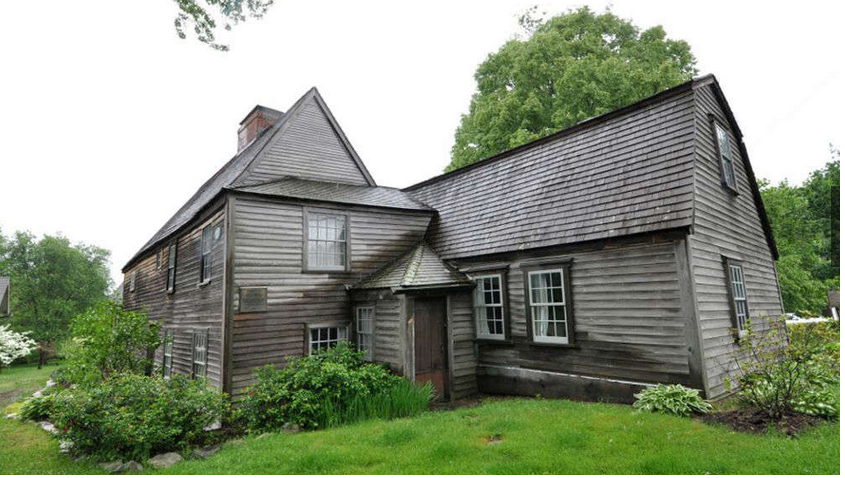 Constructed between 1637 and 1641 in Massachusetts for Puritan Jonathan Fairbanks and his family, the Fairbanks House is the oldest timber-frame house in North America. The house was occupied and passed down through eight generations of the Fairbanks family, who owned it until the early 20th century. Today it is a historic house museum.
Constructed between 1637 and 1641 in Massachusetts for Puritan Jonathan Fairbanks and his family, the Fairbanks House is the oldest timber-frame house in North America. The house was occupied and passed down through eight generations of the Fairbanks family, who owned it until the early 20th century. Today it is a historic house museum.
 The Louis Bolduc House was built in 1792 by a prosperous French-Canadian settler Louis Bolduc and remained in the same family until the 1940s. Bolduc was a lead miner, merchant, and planter. His home, which features an 18th century garden, is now a museum, owned and operated by the Missouri Society of the Colonial Dames of America.
The Louis Bolduc House was built in 1792 by a prosperous French-Canadian settler Louis Bolduc and remained in the same family until the 1940s. Bolduc was a lead miner, merchant, and planter. His home, which features an 18th century garden, is now a museum, owned and operated by the Missouri Society of the Colonial Dames of America.
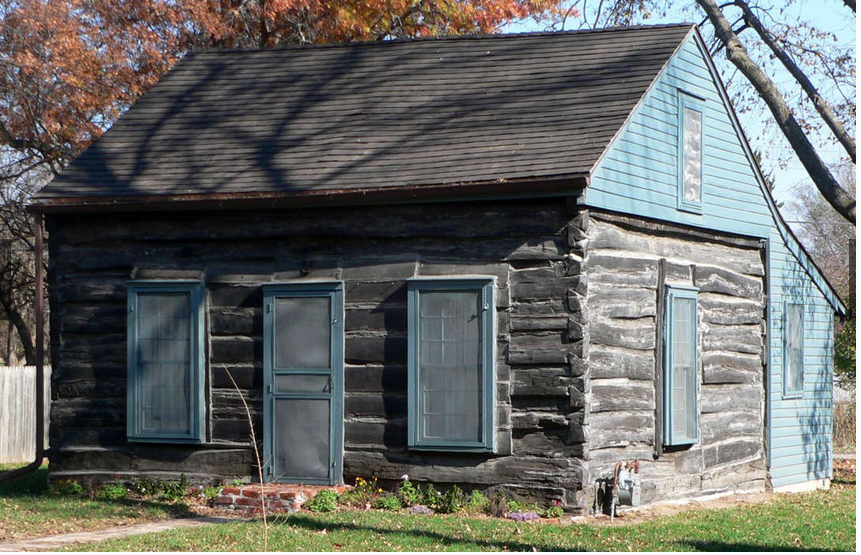 According to local legend, the Bellevue Log Cabin was built between 1830 and 1835 as a part of the Jacob Astor Fur Trading Post, near the Missouri River. In 1850, the structure was moved to Bellevue, Nebraska, where it continued as a family home until the 1950s. The cabin was constructed from cottonwood logs that are nearly a foot thick with Indian lodge pole style rafters and has been restored to near original condition.
According to local legend, the Bellevue Log Cabin was built between 1830 and 1835 as a part of the Jacob Astor Fur Trading Post, near the Missouri River. In 1850, the structure was moved to Bellevue, Nebraska, where it continued as a family home until the 1950s. The cabin was constructed from cottonwood logs that are nearly a foot thick with Indian lodge pole style rafters and has been restored to near original condition.
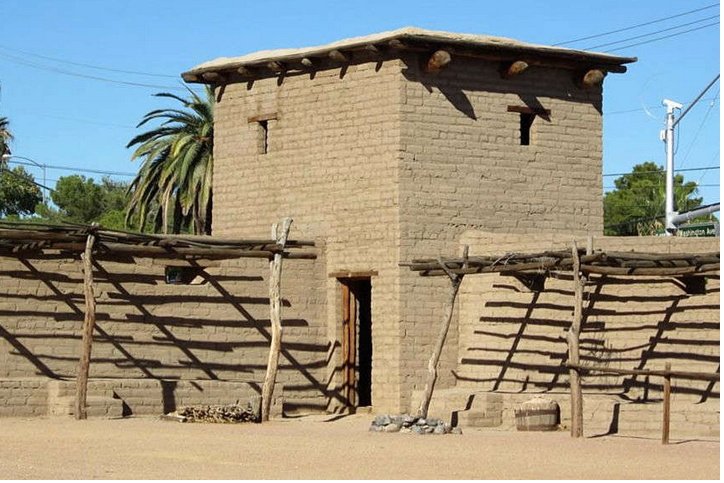 Mormon missionaries established this adobe-brick fort in Nevada at the midpoint between Salt Lake City and Los Angeles in 1855 but abandoned it during the Utah War. The site was listed on the National Register of Historic places in 1972 and became a state park in 1991.
Mormon missionaries established this adobe-brick fort in Nevada at the midpoint between Salt Lake City and Los Angeles in 1855 but abandoned it during the Utah War. The site was listed on the National Register of Historic places in 1972 and became a state park in 1991.
 Constructed between 1000 and 1450 A.D by the Taos people in New Mexico using adobe brick, the pueblo’s multi-storied buildings have been continuously inhabited for more than 1,000 years. As many as 150 residents still live in the pueblo, which is both a UNESCO World Heritage Site and a National Historic Landmark.
Constructed between 1000 and 1450 A.D by the Taos people in New Mexico using adobe brick, the pueblo’s multi-storied buildings have been continuously inhabited for more than 1,000 years. As many as 150 residents still live in the pueblo, which is both a UNESCO World Heritage Site and a National Historic Landmark.
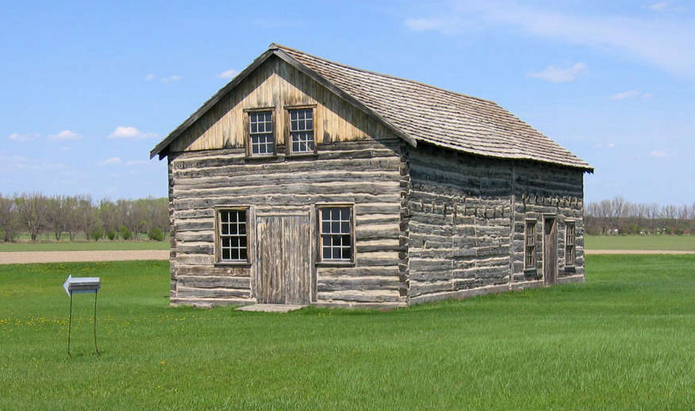 An American Fur Company agent, Norman Kittson established this trading post in 1843 to take advantage of the local Red River Valley’s prosperous fur trade. Kittson was an important fur trader, steamboat proprietor, and railroad entrepreneur in the Pembina County and Red River area of North Dakota.
An American Fur Company agent, Norman Kittson established this trading post in 1843 to take advantage of the local Red River Valley’s prosperous fur trade. Kittson was an important fur trader, steamboat proprietor, and railroad entrepreneur in the Pembina County and Red River area of North Dakota.
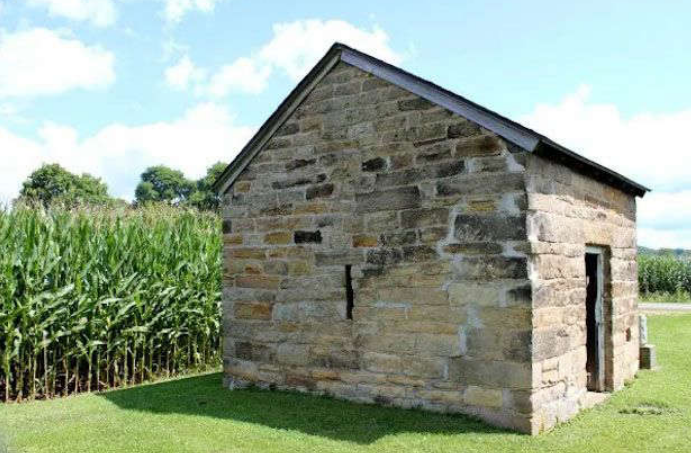 Though no one knows for sure, it’s believed that this structure was built in 1679 by French-Canadian explorer Pierre Le Moyne d’Iberville, one of explorer Robert de La Salle’s aides. In addition to possibly being the oldest building in Ohio, it may also be the oldest building in the Midwest.
Though no one knows for sure, it’s believed that this structure was built in 1679 by French-Canadian explorer Pierre Le Moyne d’Iberville, one of explorer Robert de La Salle’s aides. In addition to possibly being the oldest building in Ohio, it may also be the oldest building in the Midwest.
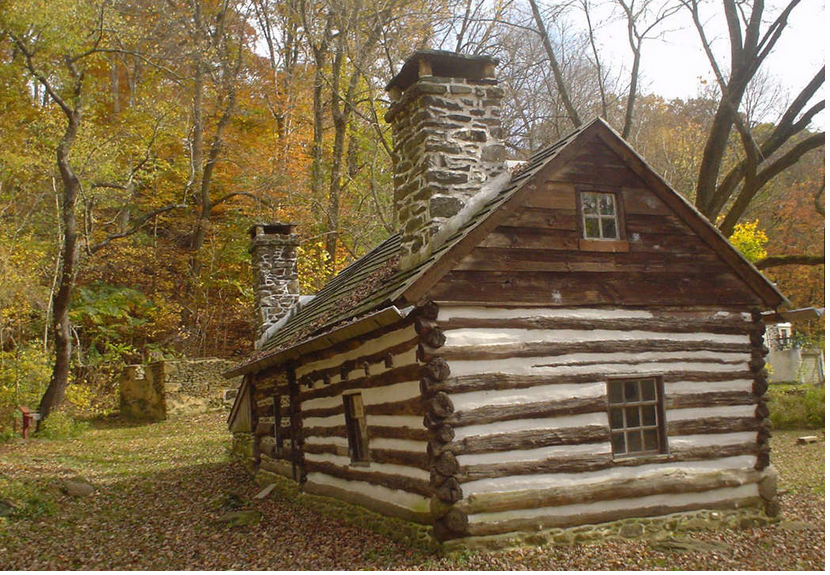 Built between 1640 and 1650 in Pensylvania as part of the New Sweden colony, the Lower Swedish Cabin is an example of a Scandinavian log house. The building was a private residence until 1937 and added to the National Register of Historic Places in 1980.
Built between 1640 and 1650 in Pensylvania as part of the New Sweden colony, the Lower Swedish Cabin is an example of a Scandinavian log house. The building was a private residence until 1937 and added to the National Register of Historic Places in 1980.
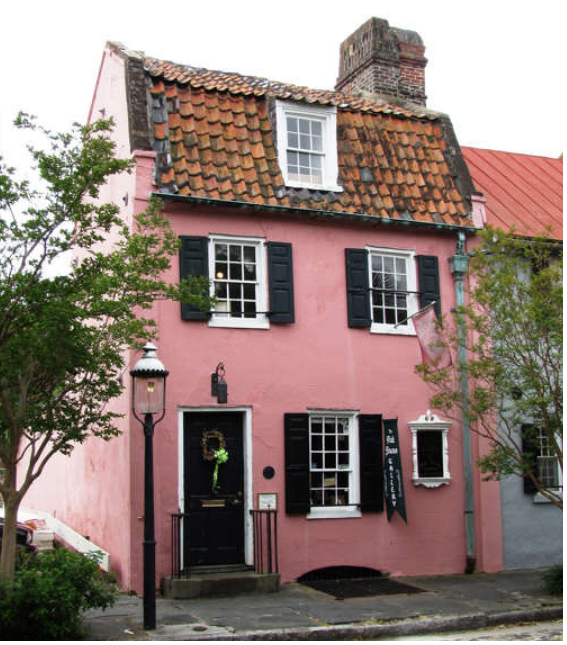 Pink Bermuda stone gives this historic home a distinctive appearance. The Pink House was constructed in 1694 in South Carolina. The property, located in the city’s French Quarter, was once a tavern rumored to have a brothel on the top floor and more recently an art gallery. The Pink House is listed in the National Register as part of Charleston’s French Quarter District.
Pink Bermuda stone gives this historic home a distinctive appearance. The Pink House was constructed in 1694 in South Carolina. The property, located in the city’s French Quarter, was once a tavern rumored to have a brothel on the top floor and more recently an art gallery. The Pink House is listed in the National Register as part of Charleston’s French Quarter District.
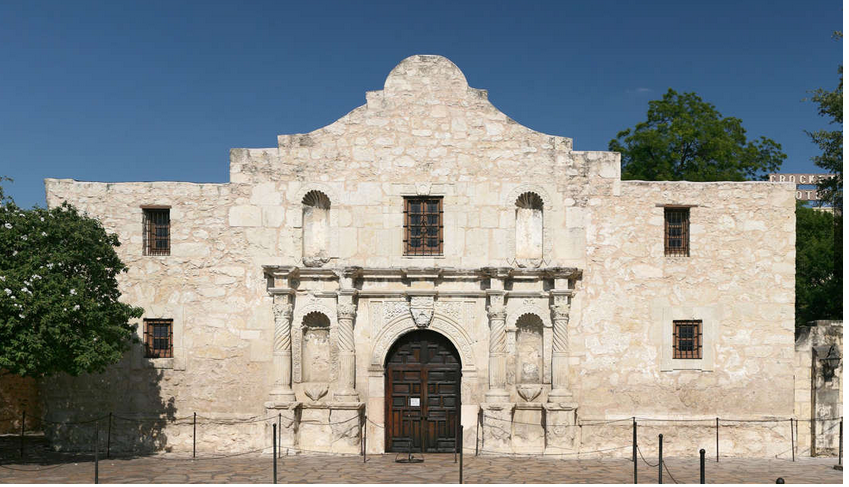 Site of the famous Battle of the Alamo, the Alamo Mission, from 1718, was originally intended to be a place of Christian education for local Native Americans. It later garrisoned both Mexican and Texan soldiers.
Site of the famous Battle of the Alamo, the Alamo Mission, from 1718, was originally intended to be a place of Christian education for local Native Americans. It later garrisoned both Mexican and Texan soldiers.
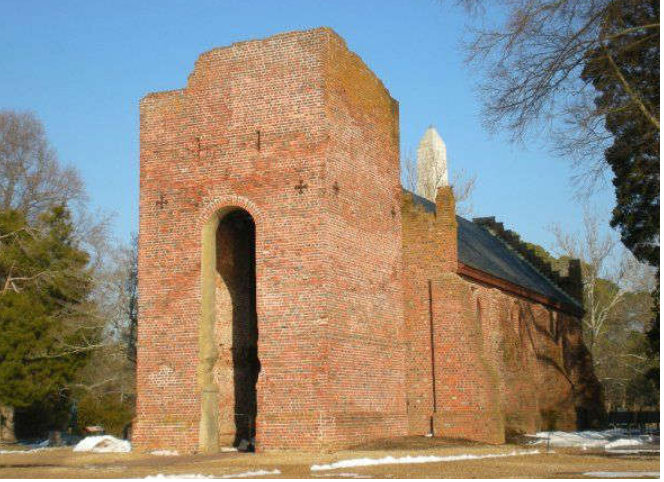 The Jamestown Church in Virginia is one of the oldest surviving building remnants constructed by the Europeans in the original 13 colonies. Though it has been amended or rebuilt six times, the tower dates back to 1639. The nave was reconstructed in 1906. The church is now part of the Jamestown National Historic Site.
The Jamestown Church in Virginia is one of the oldest surviving building remnants constructed by the Europeans in the original 13 colonies. Though it has been amended or rebuilt six times, the tower dates back to 1639. The nave was reconstructed in 1906. The church is now part of the Jamestown National Historic Site.
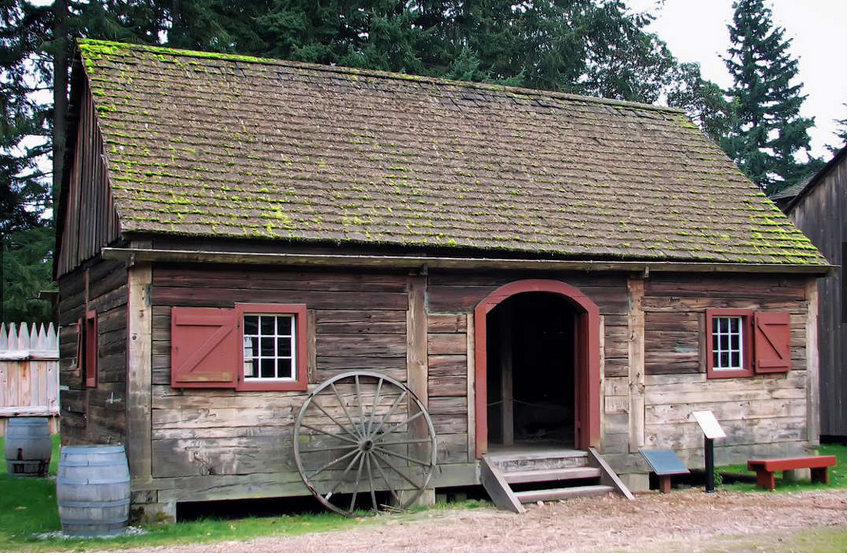 The historically significant granary is one of the few surviving Hudson’s Bay Company structures in the United States and is also a rare remaining example of post-on-sill timber construction in the country. Records show that the granary’s construction took place between July 1850 and January 1851 in Washington State.
The historically significant granary is one of the few surviving Hudson’s Bay Company structures in the United States and is also a rare remaining example of post-on-sill timber construction in the country. Records show that the granary’s construction took place between July 1850 and January 1851 in Washington State.
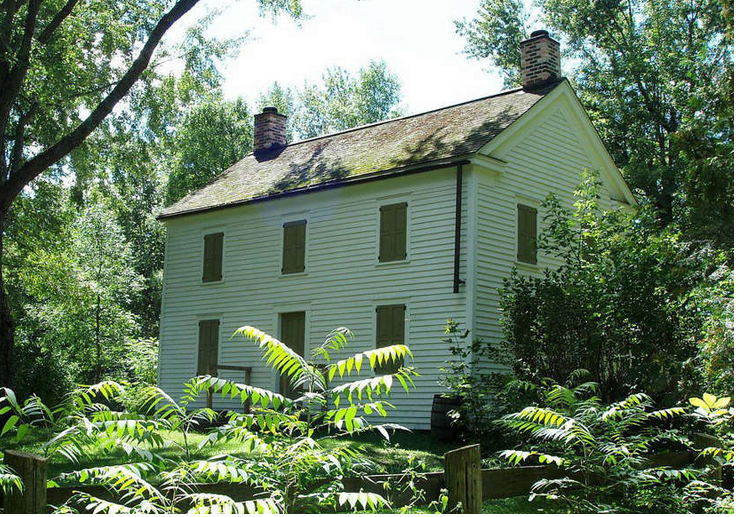 The Wakely Home in Wisconsin is known for its classic wooden-frame symmetrical construction. Built in 1842 for a family of pioneers who came from New York and were in the lumber business, the entire Greek Revival style house has been restored to its original condition.
The Wakely Home in Wisconsin is known for its classic wooden-frame symmetrical construction. Built in 1842 for a family of pioneers who came from New York and were in the lumber business, the entire Greek Revival style house has been restored to its original condition.
You can read the original article at www.msn.com

All this was prior to building and zoning codes began favoring ”tract” houses, made of modern materials. Modern Americans (and municipal governments) have a lot to learn from their ancestors.